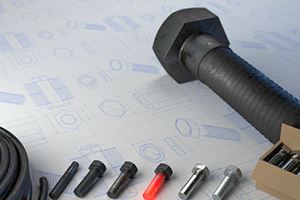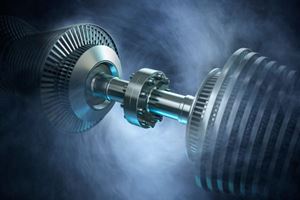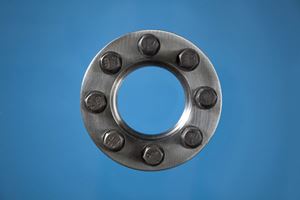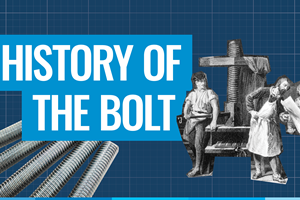Torquing or tensioning – that is the question
Which is the best method for controlled tightening of a bolted joint? Bolted plays hydraulic torquing off against hydraulic bolt tensioning. And the winner is…
Nearly everyone has tightened a nut at some point in their lives and can understand the basic concept of torquing. It is the oldest, simplest, and for most non-engineers, the only method of tightening bolted joints.
Whether by hand or hydraulics, compared to other methods, simple to understand basics of torquing make it overall a far more cost-effective option. This does not dismiss the need for training and understanding of the key factors in torque tightening.
“With one torque wrench and a range of sockets, you can tighten quite a wide range of nuts and bolt sizes,” says Robert Noble, Technical Director, Asset 55. “It offers quite a bit of flexibility, and it’s easy to explain to a technician how to use torque equipment.”
Given that it will be effective in the majority of applications, it is clear why it is often the default first choice.
Hydraulic torquing has its limitations, particularly friction, which Noble labels, “the number one enemy of torque.” Typically, friction accounts for 90 percent of the torque applied to the nut, which means only a small portion of torque will translate into useful bolt load. Because torquing is an indirect way of loading, it is difficult to predict the exact bolt load. Many factors should be taken into consideration, in particular the lubricant used, the need to avoid possible contamination and a good surface finish on the nut bearing surfaces. This must be overcome to ensure reasonable accuracy when using torque to produce preload and can be a significant disadvantage in critical joints.
Noble stresses that with good procedures, calibrated equipment and competent personnel, torque tightening can be used successfully on most joints. Much is made of bolt scatter, which will see the achieved preload on an individual bolt within +/– 25 percent of target, but on a flange with multiple bolts the usual result is to achieve an average bolt load within close range of target (providing good practice is followed and the coefficient of friction is assessed). “This is accurate enough for the majority of gasketed flange joints, so torque remains a very viable technique,” Noble says.
Hydraulic tensioning of bolts began in the 1970s, pioneered in part by British engineer Fred Heaton, who would go on to found companies Hydratight and Boltight. Over the next 20 years it gradually became more common and is now becoming the preferred method for tightening large critical joints in many industries, such as oil and gas, wind, subsea, or power generation.
Compared to hydraulic torquing, it is a more complex procedure that involves more specialised equipment. In certain applications tensioning can offer greater accuracy and control, as well as speed of assembly. It is particularly advantageous on flanges with multiple bolts. Using conventional torque, each bolt is tightened one-by-one in a pattern, which must be applied carefully to avoid the risk of putting too much load on one side of the gasket or flange. By attaching multiple tensioners, it is possible to tighten a number of bolts simultaneously for an even compression of the gasket.
“This is essentially where hydraulic tensioning came from,” says Nitin Patel, Projects and Commercial Manager, Boltight. “It allowed people to control the clamping force and if you could do it all in one go, around the whole circumference, that would be much better for the gasket, much better for the joint, and you could actually predict the load that is in that joint.”
Another perceived advantage of tensioning is improved accuracy, but as Noble points out, it’s not always that simple. “Unfortunately, the industry tries to use simple one-size-fits-all rules but they do not apply to the torque and tension criteria,” he explains. “Where the conditions are right, tensioning can become very accurate. Typically, that would be for bolts with a high length-to-diameter ratio – long, thin bolts – and where you have high bolt loads. In these applications tensioning is more accurate than torque. But conversely with short, fat bolts and low bolt loads, tensioning becomes less accurate.”
Tensioning also has its disadvantages, namely load loss, which occurs when the tensioner is released and the load transfers to the nut. To compensate for this, the load loss is estimated and the technician applies the expected load loss in advance. This means that the bolt, gasket and flanges are subjected to greater stress than the targeted assembly stress. This has to be taken into consideration either at the joint design stage or prior to using the tooling. An alternative is to repeat the tensioning procedure to compensate for the settlements.
Hydraulic bolt tensioning can also have practical and logistical drawbacks. Since it requires more equipment and specialised tools, it can be significantly more expensive. “Tensioning is not easily understood, other than by those who tension regularly,” says Noble. “You need specific tension tools and it’s difficult to design a tensioner range with the same flexibility as a torque wrench.”
So the truth is that there is no simple answer to which one is better, torquing or tensioning. It is best decided on a joint-by-joint basis.
“Blanket policies result in a lot of technical queries and in some cases the need to compromise on bolt load. Instead you need to do what is best for that specific joint,” Noble says and concludes: “Sometimes it comes down to looking at the application with open eyes, considering how you will actually get the equipment out to the site, the location where it has to be used and how it is going to fit into the application.”
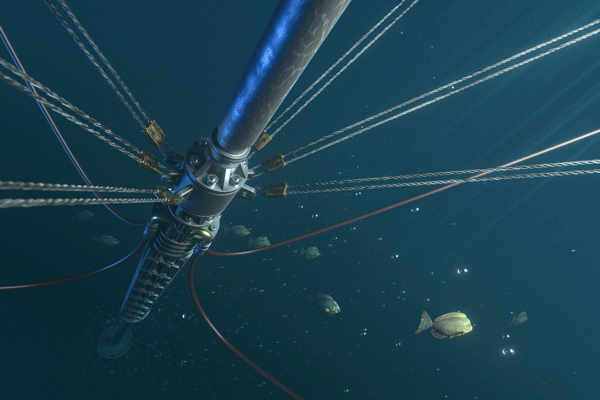
Did you know that…
Friction typically accounts for 90% of the torque applied to the nut during hydraulic torquing?
Joint ventures
For bolted joints, several factors must be considered before choosing between torquing or tensioning.
- Establish the target assembly load that the application needs.
- Consider any factors that can directly influence your choice. In applications where it would be beneficial to avoid any torsional effect on the bolt, such as foundation bolts in concrete, tensioning would be the best option. Torquing, however, could be a better option if you are dealing with space constraints.
- Don’t underestimate the physical and logistical constraints. For a tensioner to grip properly, at least one diameter of thread needs to be protruding through the nut.

Whether hydraulic torquing or hydraulic tensioning is the best choice must be decided on a joint-by-joint basis.
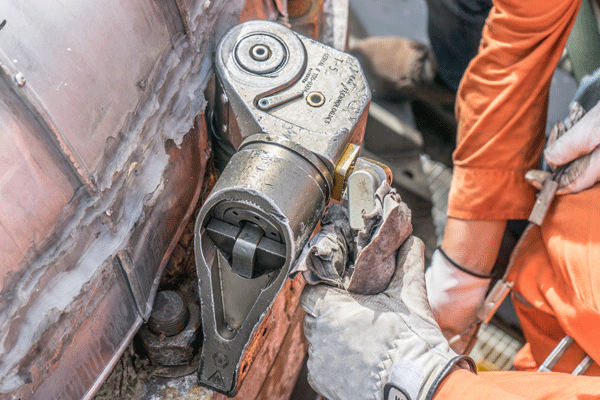
Whether hydraulic torquing or hydraulic tensioning is the best choice must be decided on a joint-by-joint basis.
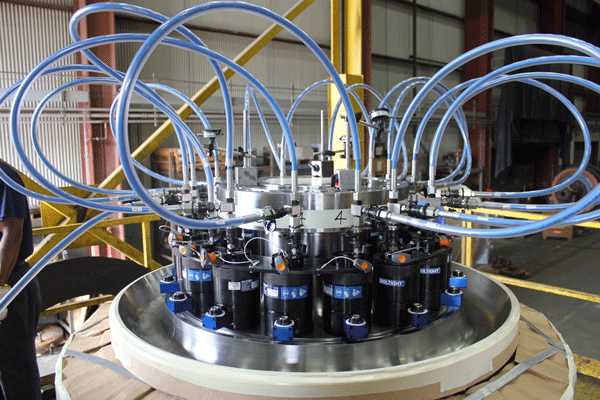
Hydraulic tensioning: A jack is attached to the bolt, and high-pressure hydraulics is used to stretch the bolt and lift the nut clear of the flange. The nut is then easily turned down back to the flange surface. When the hydraulic pressure is released, the stretched bolt creates clamping force as it attempts to revert back to shape.
